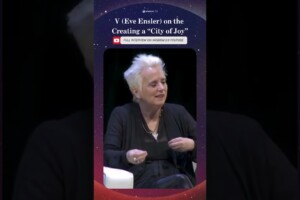
If you want to increase your creativity, you can try meditation. There are several types of meditations for creativity, including Open-monitoring, Focused attention, Flow, and Mindfulness. All of these can help you to develop your creativity. Moreover, they can help you to relax your mind and body.
Mindfulness meditations
Mindfulness meditation helps you tap into your creativity by redirecting your energies in a healthy way. It increases focus, clarity of thought, and creativity, and it also reduces stress. The benefits of meditation are numerous, and you don’t have to practice for years to see improvements. You can also download a free app, like MindTastik Mindfulness, and begin your journey to greater creativity today.
There are many guided meditations for creativity that can help you improve your creative output. One such meditation is a 7-minute mini-meditation designed specifically for artists. This meditation helps artists strengthen their ability to speak from their hearts and removes mental blocks and barriers. The calming effect of meditation will allow your creative flow to flow smoothly and boost your confidence.
Mindfulness meditations for creativity involve attending to your breath, thoughts, and physical body. Take a deep breath and let it out slowly. This will help you release any tension in your body and release negative thoughts. Once your breathing is in a relaxed state, you can scan the entire body. You can focus on your thoughts and feelings or on a specific item. Each type of meditation influences your creativity differently.
One study showed that meditative practices can improve creativity and focus. It also reduced the stress levels of people who practiced the meditation. It also increased their resilience, resulting in higher creative output. It was also noted that mindfulness meditations help regulate emotions and keep a positive outlook. Furthermore, they can help you switch off your fight-or-flight responses and engage in a more thoughtful mode, which is essential for making balanced decisions.
Mindfulness meditations for creativity are also associated with the ability to change perspectives and to expand empathy. In addition, practicing mindfulness helps increase working memory and reduces the fear of judgment. Furthermore, it improves verbal creativity and problem solving skills, and many studies have shown that people who meditate regularly are better problem solvers.
Open-monitoring meditation
Open-monitoring meditation is a powerful method for enhancing creativity. It promotes divergent thinking, which is the ability to come up with many different solutions to the same problem. It also increases working memory and cognitive flexibility. In addition to enhancing creativity, open-monitoring meditation is effective for reducing stress and improving attention span.
The most powerful effect of open-monitoring meditation is on evoking a creative state. Open monitoring meditations require you to be aware of what is happening right now, and to follow your breath. Then, after you gain an insight, you can use focused attention to work on it.
Another method of open-monitoring meditation is focused awareness, which involves paying attention to the sensations in your body. It focuses on cultivating compassion for your own body and for others. It is also used in sports. It is important to note that different types of meditation have different effects on the brain.
Open-monitoring meditation helps you observe yourself more accurately and creatively. It eliminates the rigidity of fixed perspective. The result is a more receptive, fluid state of mind. You can also develop greater cognitive control. The benefits of open-monitoring meditation include increased flexibility of thought and improved performance on divergent thinking tasks.
Open-monitoring meditation helps you improve your ability to identify creative ideas. This type of meditation helps you develop empathy and helps you think outside the box. This is one of the most effective forms of meditation for creativity. It is also effective for improving your problem-solving skills. If you are looking for a new way to improve your creativity, open-monitoring meditation may be the right choice for you.
In the open-monitoring meditation, participants observe their bodily sensations without judging them. For seven days, they meditated for 30 minutes per day. They found that the results were similar in both groups.
Focused attention meditation
Focused attention meditation increases creativity by training the mind to remain calm and focused. The practice has been found to improve a person’s emotional and physical well-being. It has been shown to improve the function of the brain in ways that may surprise people. In addition, it has been found to influence the brain activity of the anterior cingulate cortex, which is involved in error detection and self-regulation.
The ACC is activated in three types of brain areas: the sensory-motor network, the default mode network, and the fronto-parietal network. The fronto-parietal network is composed of the rostro-lateral prefrontal cortex, anterior insula, dorsal anterior cingulate cortex, and the anterior inferior parietal lobulum.
Creative thinking involves two processes, convergent and divergent. Divergent thinking involves generating multiple ideas for a specific problem, while convergent thinking focuses on one solution. In both types of thinking, the creative process is influenced by emotions. When we practice focused attention meditation, we can enhance our ability to process both negative and positive emotions.
In addition to increasing attention span and reducing stress, focused attention meditation is also effective for improving divergent thinking, a crucial skill in creativity. Divergent thinking involves coming up with multiple, different ideas for a given problem. Divergent thinking is strongly correlated with creativity. In addition, focused attention meditation helps improve executive attention.
While focused attention meditation improves divergent thinking, open awareness meditation improves convergent thinking. Practicing both types of meditation will help you become more creative. Open awareness meditation is the opposite of focused attention meditation and allows you to keep a lot of information in your mind. It allows new information to flow freely, and when new chunks of information come into contact, new associations are formed. These new associations may lead to new ideas or creative solutions.
Flow meditation
Researchers have found that when people are in a state of flow, they are more creative than when they are not. In fact, people even report that they are more creative the day after they were in a flow state. The reason for this is that being in flow not only elevates your creativity in the moment, but trains you to be more creative in the future.
Flow is associated with the reduction of self-consciousness. Researchers have discovered that during flow, the prefrontal cortex temporarily deactivates. This reduces self-monitoring and impulse control, improving brain functionality. In addition, the prefrontal cortex shuts down the critical, inner monologue that inhibits creativity.
If you are looking for ways to improve your creativity, try flowing meditation. It is an ancient technique that allows you to reach a state of complete immersion. It has been used for millennia and has been shown to increase our happiness and creativity. What’s great is that you don’t need to live in a cave or give up all your material possessions to benefit from the benefits of meditation. Modern day people are tapping into the benefits of “flowing” meditation, and using it to improve their creativity and overall happiness.
Creative people often find it difficult to focus on their work. Meditation helps them concentrate and strengthen their creative brain. It also helps people solve problems. With the heightened awareness that comes with meditation, people are able to follow their creative thoughts without judging their process. As a result, they are more likely to come up with original ideas and solutions to problems.
Creativity often arises from emotions. Meditation helps us connect with our emotions and express them in a healthier way. It also helps people become more aware of their feelings. By understanding our emotions, we can better understand them and manage them better.
Visualization meditation
Visualization meditation for creativity is a technique used to achieve goals. When you visualize a desired outcome, you create a setting that is similar to the actual experience you’ll have when you accomplish the goal. If you’re a creative person, it’s important for your visualization to be realistic. You’ll want to note any thoughts that arise and the feelings you feel while imagining the result.
While you can practice visualization anytime, it’s best to do it in a comfortable and quiet environment. You can use a relaxing technique such as deep breathing to calm your emotions and focus on the object. This will help you visualize more effectively. Once you’ve learned the basics of visualization, you can try it on a larger object.
Another option for practicing visualization is to listen to a guided video. Visualization is often a part of other meditation practices. For instance, loving-kindness meditation, appreciative joy meditation, and equanimity meditation all focus on visualization. You can even find guided meditations to help you cultivate specific psychological states, such as gratitude or radical acceptance. These types of guided meditations can be particularly helpful for visual learners.
Visualization meditation helps the brain process images that encourage creativity. It can also help relieve stress and anxiety. When done correctly, visualization meditation activates the parasympathetic nervous system, which is responsible for the body’s resting state. If you’re experiencing feelings of anxiety or depression, it’s a good idea to talk with a medical professional to seek treatment.
Before beginning creative visualization, you should identify any limiting beliefs you have about yourself. If you’re feeling unworthy, unintelligent, ugly, or unstable, this technique might not be for you. You should also make sure you’re ready for the experience.
Did you miss our previous article…
https://quietmeditations.com/grief-meditations/





